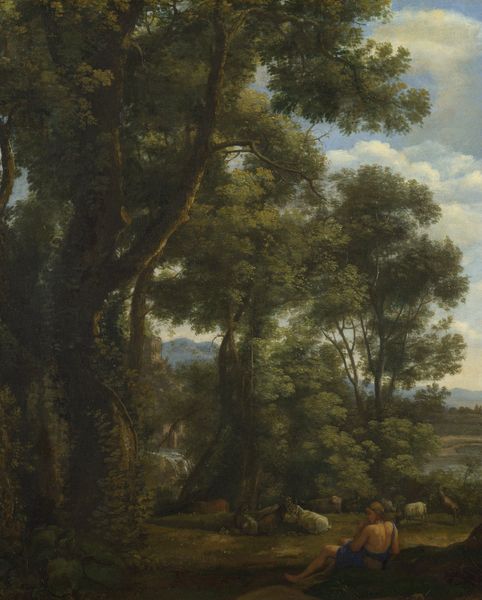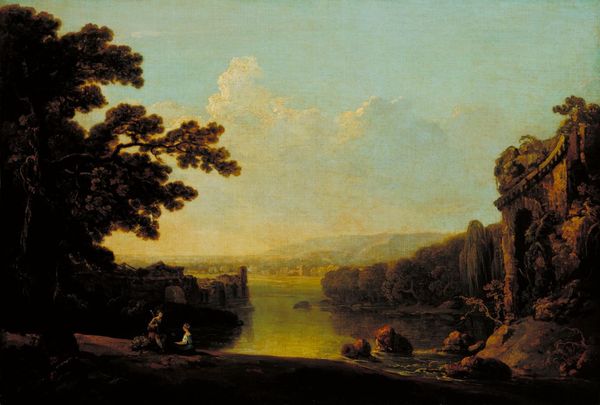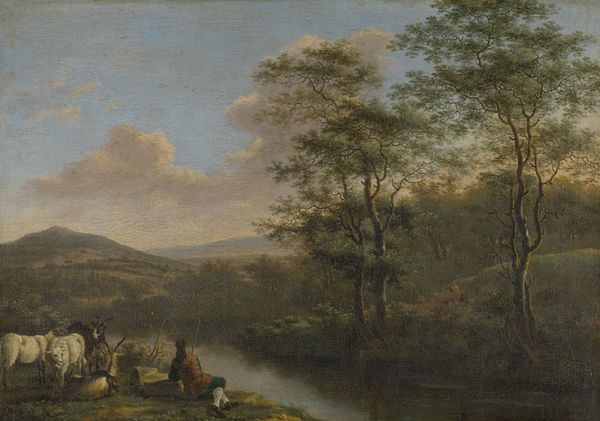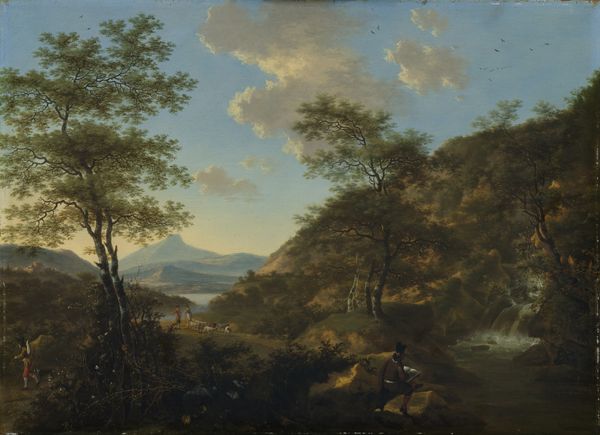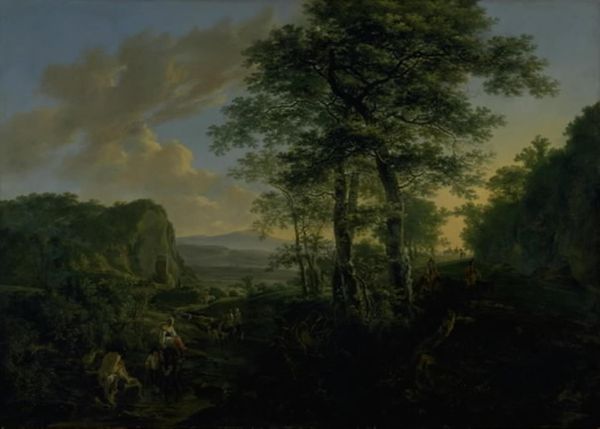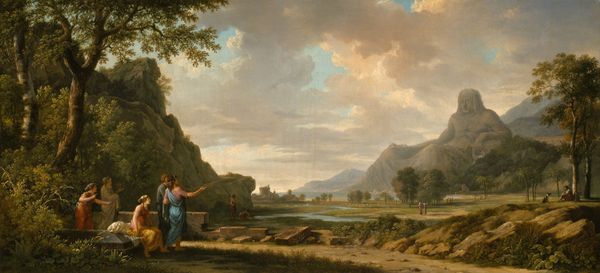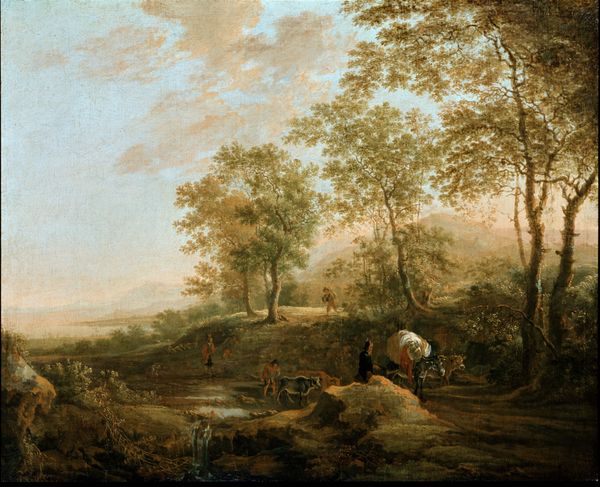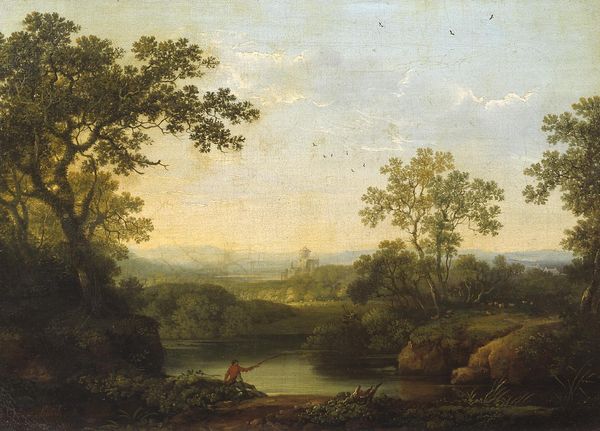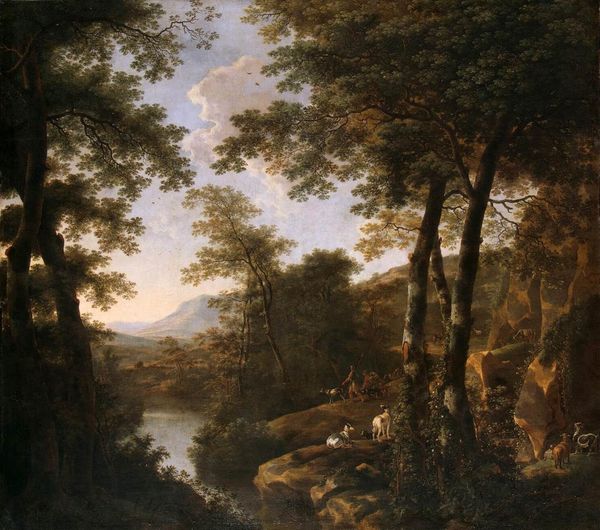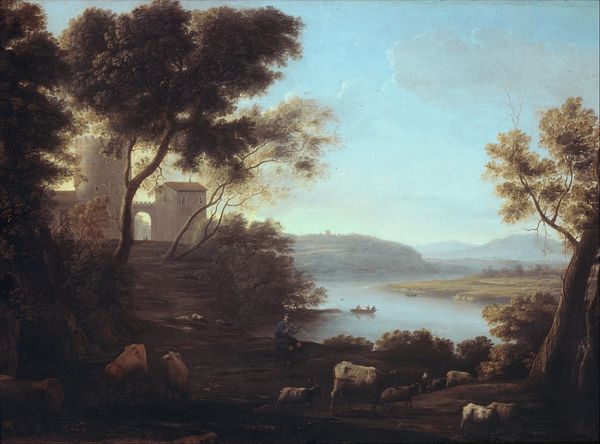
painting, oil-paint
painting
oil-paint
landscape
figuration
romanticism
Dimensions: height 68.3 cm, width 83.3 cm, thickness 2.8 cm, depth 7 cm
Copyright: Rijks Museum: Open Domain
Curator: At first glance, it evokes such a sense of tranquility, doesn’t it? Editor: Absolutely. It’s serene, but also feels staged. A bit like pastoral theater. I feel a touch of melancholia looking at it, even. Curator: That's interesting. We’re looking at "Arcadian Landscape," painted in 1813 by Jan Willem Pieneman. Notice how he constructs the scene. It’s a romantic vision, almost an ideal. Editor: You’re right, “ideal” is key here. These Arcadian landscapes were so fashionable. It’s less about a literal place and more about conjuring an imagined, untainted past, a kind of utopian refuge, perhaps from political unrest or the rapidly industrializing world. Curator: Precisely. The figures, nestled amongst the sheep, appear as if from a myth, hinting at classical themes of love, nature, and simplicity. Look at the positioning of the sheep, it almost suggests they represent innocence and pastoral virtue, very common imagery. Editor: And those muted, gentle colors reinforce the idyllic mood. Though I have to wonder about its purpose at the time it was painted, with the upheavals of the Napoleonic era? This imagined retreat might have served as both solace and perhaps even a silent critique of the present. Curator: A safe, apolitical haven perhaps. Pieneman would later embrace more overt patriotism in his work. Also consider the trees—their symbolic significance goes deep into the past—as sites of ancient pagan ritual and communion with nature, evoking notions of cyclical time, death and rebirth. Editor: It speaks to the power of art as a form of social commentary— sometimes overt, but just as often, whispered in these seemingly simple pastoral scenes. It really provides an opportunity to study cultural nostalgia and anxieties in paint form. Curator: Exactly, and hopefully for our listeners, a bit of historical context to help explore its complexities and appreciate the artistry on display in this space today. Editor: It leaves me wondering how people, then and now, find solace and commentary in visions of idealized landscapes. Thanks for highlighting some deeper cultural meanings that go beyond surface aesthetics, I found it thought-provoking.
Comments
No comments
Be the first to comment and join the conversation on the ultimate creative platform.
